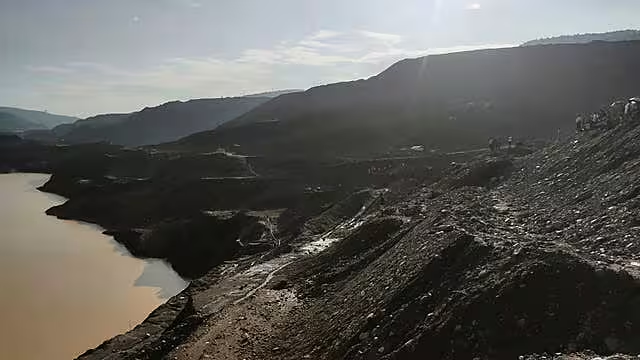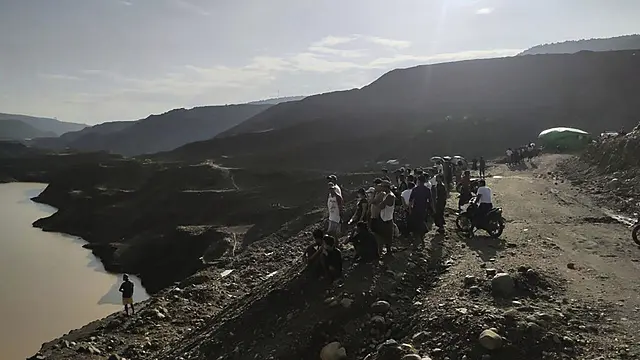A search and rescue operation was under way on Monday after a landslide at a jade mine in northern Myanmar left more than 30 people missing.
The incident happened in Hpakant, a remote mountainous town in Kachin state about 950km north of Myanmar’s biggest city, Yangon. The area is the epicentre of the world’s biggest and most lucrative jade mines.
The leader of a local rescue team co-ordinating search efforts told the Associated Press on Monday that more than 30 miners who were digging for jade were swept into a lake when the landslide hit near Manna village at around 3.30pm on Sunday.

Earth and debris from several mines near the village slid about 304m down a cliff into the lake below and struck the miners on the way, he said.
He said 34 people were confirmed missing and local rescue teams were searching the lake on Monday. Eight miners were injured and taken to a local hospital on Sunday, he added.
One miner said three of his colleagues who were digging for jade were carried down into the lake by the landslide. He said most of the victims were men.
Similar accidents usually occur on a smaller scale and do not get much attention.
The victims are usually independent miners who settle near giant mounds of discarded earth that have been excavated by heavy machinery used by mining companies.
They scavenge for bits of jade and usually work and live in abandoned mining pits at the base of the unstable mounds of earth. Most of the scavengers are unregistered migrants from other areas.
In July 2020, at least 162 people died in a landslide in the same area, while a November 2015 accident left 113 dead.

Human rights activists say jade mining is an important source of revenue for Myanmar’s military-installed government. Opponents of army rule advocate sanctions and boycotts to reduce jade sales.
The mines are also a main source of revenue for the Kachin Independence Army, an ethnic armed group that is based in Kachin state and has been fighting for decades against the central government for greater autonomy.
A ceasefire in the region has been disrupted since the military seized power in February 2021 from the elected government of Aung San Suu Kyi.
The region is now embroiled in an armed conflict between the military and the Kachin Independence Army that has driven many civilians into refugee camps and nearby townships.







